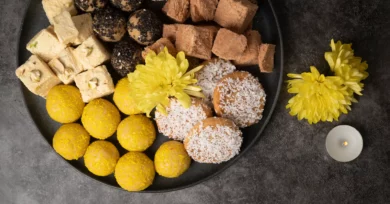East Asia, comprising countries such as China, Japan, South Korea, and Taiwan, boasts a rich tapestry of traditions, customs, and culinary delights. With a heritage spanning thousands of years, the cultures of East Asia are deeply rooted in history and shaped by diverse influences. From ancient philosophies like Confucianism to vibrant festivals like Lunar New Year, East Asian culture reflects a harmonious blend of tradition and innovation.
In today’s interconnected world, understanding East Asian culture holds immense significance. It fosters global harmony, promotes cross-cultural understanding, and nurtures mutual respect among nations. By delving into the nuances of East Asian traditions, we gain insight into the values and practices that have profoundly influenced these societies.
East Asian Countries: A Cultural Overview
A. China: Exploring Historical Significance and Influences
China, a cornerstone of East Asian culture, boasts a rich historical tapestry that has profoundly shaped the region. From ancient dynasties to revolutionary movements, China’s history has influenced not only its own people but also the entire East Asia. Explore the roots of Confucianism, Taoism, and Buddhism, which continue to guide societal norms and values in East Asia.
Traditional Customs and Festivals: Vibrancy in Rituals and Celebrations
Delve into the colorful world of Chinese traditions and festivals. Witness the grandeur of the Lunar New Year, where families gather to honor ancestors and welcome good fortune. Experience the enchanting Mid-Autumn Festival, celebrated with mooncakes and lanterns, symbolizing unity and harvest. These customs showcase the deep-rooted values and beliefs that characterize East Asian culture.
B. Japan: Unraveling Cultural Heritage and Traditions
Japan, with its unique blend of ancient customs and modern innovations, stands as a cultural marvel in East Asia. Discover the elegance of the Japanese tea ceremony, an art form that embodies harmony, respect, and purity. Explore the grace of traditional arts like ikebana (flower arranging) and origami (paper folding), reflecting the precision and finesse of Japanese culture.
Modern Influences and Innovations: Embracing Change with Tradition
Witness how Japan seamlessly blends its rich heritage with contemporary influences. From anime and manga to cutting-edge technology, Japan continues to captivate the world. Explore the innovative spirit of Japanese society, where ancient traditions harmonize with modern advancements, setting trends not only in East Asia but globally.
C. South Korea: Embracing Cultural Richness and Diversity
South Korea, a vibrant tapestry of culture, embraces diversity in its traditions and lifestyles. Experience the warmth of Korean hospitality through practices like “Jeong” (deep affection and attachment). Dive into the world of hanbok, the traditional attire that represents the essence of Korean identity and heritage, showcasing beauty in simplicity and elegance.
Impact of Pop Culture: K-Pop and K-Drama Phenomenon
Explore the global phenomenon of K-Pop and K-Drama, cultural exports that have taken the world by storm. Discover how the South Korean entertainment industry, characterized by catchy music, compelling dramas, and mesmerizing performances, has become a cultural ambassador, uniting people across continents and exemplifying the creative dynamism of East Asia.
D. Taiwan: Reveling in a Unique Blend of Traditions
Taiwan, an island nation, boasts a rich tapestry of traditions influenced by its indigenous cultures and Chinese heritage. Experience the allure of Taiwanese temples adorned with intricate carvings and vibrant festivals, reflecting the island’s spiritual and cultural richness. Witness the artistry of traditional Taiwanese puppetry, a captivating form of storytelling that has stood the test of time.
Culinary Delights and Artistry: Gastronomic Adventures and Creative Expression
Indulge your senses in Taiwanese culinary delights, where flavors meld in a harmonious dance. Explore the world of xiao long bao (soup dumplings) and bubble tea, creations that have become global sensations. Delve into the artistry of Taiwanese cuisine, where every dish is a testament to the creativity and passion of the people, exemplifying the gastronomic treasures of East Asia.
Traditional East Asian Foods
East Asia, comprising countries like China, Japan, Korea, and Taiwan, boasts a rich culinary heritage. Let’s explore the delectable world of East Asian cuisines, each with its own unique flavors and traditions.
A. Chinese Cuisine
Chinese cuisine is incredibly diverse, with regional varieties that offer a tantalizing array of flavors. From the spicy dishes of Sichuan to the delicate flavors of Cantonese cuisine, China’s culinary landscape is vast and varied.
Regional Varieties and Famous Dishes
In China, the cuisine varies significantly from one region to another. In the south, you’ll find the famous Cantonese cuisine, known for its fresh ingredients and subtle flavors. Sichuan cuisine, hailing from the spicy southwestern region, delights the taste buds with its bold and fiery dishes like Kung Pao Chicken. Northern cuisine, including Beijing and Shandong styles, emphasizes noodles, dumplings, and hearty stews. Chinese cuisine also includes iconic dishes such as Peking Duck, Dim Sum, and Mapo Tofu, each representing the culinary expertise of different regions.
Culinary Techniques and Ingredients
Chinese cooking techniques are as diverse as the country itself. Stir-frying, steaming, and deep-frying are common methods used to prepare a wide range of dishes. The culinary artistry lies in the meticulous knife skills, precise timing, and the perfect balance of flavors achieved through a combination of ingredients like soy sauce, ginger, garlic, and various spices.
B. Japanese Cuisine
Japanese cuisine is renowned for its emphasis on fresh, seasonal ingredients and meticulous preparation techniques. From the world-famous sushi to delicate traditional sweets, Japanese food culture is a delightful exploration of flavors and textures.
Sushi, Sashimi, and Beyond
Sushi, perhaps the most well-known Japanese dish, features vinegared rice combined with various ingredients like raw fish, vegetables, and sometimes tropical fruits. Sashimi, thin slices of fresh raw fish, is another Japanese delicacy. Beyond these, Japanese cuisine includes a wide variety of dishes like tempura (battered and deep-fried seafood or vegetables), ramen (noodle soup), and donburi (rice bowls with toppings) that showcase the diversity of their culinary expertise.
Tea Culture and Traditional Sweets
Japanese tea culture, especially matcha (green tea), holds a special place in Japanese cuisine. Traditional sweets, known as wagashi, often accompany tea ceremonies. These sweets, made from ingredients like mochi (rice cake), sweet bean paste, and fruits, are not only visually appealing but also incredibly delicious, reflecting the country’s cultural and seasonal influences.
C. Korean Cuisine
Korean cuisine, characterized by bold flavors and a wide array of side dishes, offers a unique culinary experience. From the iconic kimchi to the sizzling delights of Korean BBQ, the food culture in Korea is both comforting and adventurous.
Kimchi and Banchan: Staple Side Dishes
Kimchi, fermented vegetables (usually cabbage and radishes) with chili pepper and other seasonings, is a staple in Korean cuisine. It’s often served as a side dish and plays a significant role in Korean meals. Banchan refers to an assortment of small side dishes served with rice, providing a balance of flavors, textures, and nutrients. These can include pickled vegetables, seaweed, and various types of pancakes.
BBQ Culture and Street Food Delights
Korean BBQ is a popular dining experience where diners grill their own meat, typically beef, pork, or chicken, at their table. The grilled meat is often wrapped in lettuce leaves and enjoyed with a variety of condiments. Additionally, Korea’s street food scene is vibrant, offering treats like tteokbokki (spicy rice cakes), hotteok (sweet pancakes filled with sugar and nuts), and odeng (fish cake skewers), providing locals and tourists with a delightful culinary adventure.
D. Taiwanese Cuisine
Taiwanese cuisine is a melting pot of flavors influenced by Chinese, Japanese, and indigenous Taiwanese cultures. Street food is especially celebrated, offering an abundance of delicious and affordable treats to satisfy every palate.
Street Food Paradise
Taiwan is renowned for its diverse and delectable street food offerings. Night markets are bustling hubs of culinary creativity, where vendors serve mouthwatering dishes like oyster omelets, stinky tofu, bubble tea, and gua bao (Taiwanese pork buns). Taiwanese street food reflects the island’s culinary innovation and passion for flavor.
Influences from Various Culinary Traditions
Taiwanese cuisine seamlessly blends elements from various culinary traditions. From the Chinese culinary techniques brought by immigrants to the innovative twists inspired by Japanese cuisine, Taiwanese dishes are a delightful fusion of flavors and styles. Staples like beef noodle soup and xiaolongbao (soup dumplings) are beloved by locals and visitors alike, showcasing the culinary diversity of this vibrant island nation.
East Asian Traditions and Festivals
A. Chinese Festivals
Lunar New Year: The Biggest Celebration
Lunar New Year, also known as the Spring Festival, marks the most significant celebration in East Asian cultures. Families gather to usher in the new year with elaborate feasts, vibrant parades, and colorful decorations. Traditional dragon and lion dances fill the streets, symbolizing good fortune and warding off evil spirits. The air is filled with the sounds of firecrackers, adding to the festive atmosphere.
Mid-Autumn Festival and Dragon Boat Festival
The Mid-Autumn Festival, often referred to as the Moon Festival, is a time for family reunions. People share mooncakes, a delicious pastry filled with various sweet fillings, under the glow of the full moon. Dragon Boat Festival, on the other hand, is a spirited event where communities come together to watch dragon boat races. This tradition commemorates the ancient poet Qu Yuan and involves vibrant boats adorned with dragon heads and tails, racing down rivers and lakes.
B. Japanese Festivals
Cherry Blossom Festival (Hanami)
Cherry Blossom Festival, or Hanami, is a celebration of the ephemeral beauty of cherry blossoms. During spring, parks and gardens are transformed into a sea of delicate pink and white flowers. Families and friends gather for picnics beneath the blooming trees, appreciating nature’s fleeting yet exquisite display. It’s a time for reflection, appreciating the transient nature of life.
Gion Matsuri and Obon Festival
Gion Matsuri, held in Kyoto, is one of Japan’s most famous festivals, featuring magnificent processions with lavishly decorated floats. These floats, adorned with tapestries and lanterns, are paraded through the city streets, accompanied by traditional music and dance. Obon Festival, on the other hand, is a time for honoring ancestors. Families visit graves, light lanterns, and participate in Bon Odori dances, believing that the spirits of the departed return to the world during this period.
C. Korean Festivals
Chuseok: Korean Thanksgiving Day
Chuseok is a heartfelt Korean celebration, often referred to as Korean Thanksgiving Day. Families come together to express gratitude for the harvest, offering food, and performing ancestral rites. Traditional customs include preparing delicious delicacies like songpyeon (rice cakes) and engaging in folk games, fostering a sense of unity and gratitude within the community.
Lantern Festivals and Traditional Performances
Korea’s Lantern Festivals are a visual delight, with intricate lantern displays illuminating the night sky. These festivals celebrate Buddha’s birthday and feature colorful lanterns of various shapes and sizes. Traditional performances, such as mask dances and drumming, captivate audiences, showcasing Korea’s rich cultural heritage and artistic expression.
D. Taiwanese Festivals
Ghost Month and Mazu Worship
Ghost Month, a significant Taiwanese tradition, involves honoring deceased ancestors and spirits. Families set up altars with offerings, burn incense, and participate in ceremonies to ensure the well-being of departed souls. Mazu Worship, dedicated to the sea goddess Mazu, includes lively processions, temple festivals, and boat parades, reflecting Taiwan’s deep-rooted maritime culture.
Lantern Festival and Double Ten-Day Celebrations
Taiwan’s Lantern Festival is a spectacular event featuring thousands of illuminated lanterns, creating a mesmerizing ambiance. Participants release lanterns into the night sky, symbolizing hopes and dreams for the future. Double Ten Day commemorates the National Day of the Republic of China, marked by patriotic displays, cultural performances, and vibrant parades, showcasing Taiwan’s pride and unity as a nation.
Final thoughts
Exploring the cultural practices and etiquette of East Asia reveals a tapestry woven with tradition, respect, and harmony. Influenced by Confucian ideals, traditional clothing, tea ceremonies, calligraphy, and respect for elders, East Asian societies embrace a rich heritage that emphasizes unity and mutual understanding. These enduring customs not only define the region but also inspire a global appreciation for the depth and beauty of East Asian culture.
Read More:
Similar Cultures of the World- Unity in Cultural Diversity
The 10 Alternatives of VIPBox For Watching Live Sports Online






